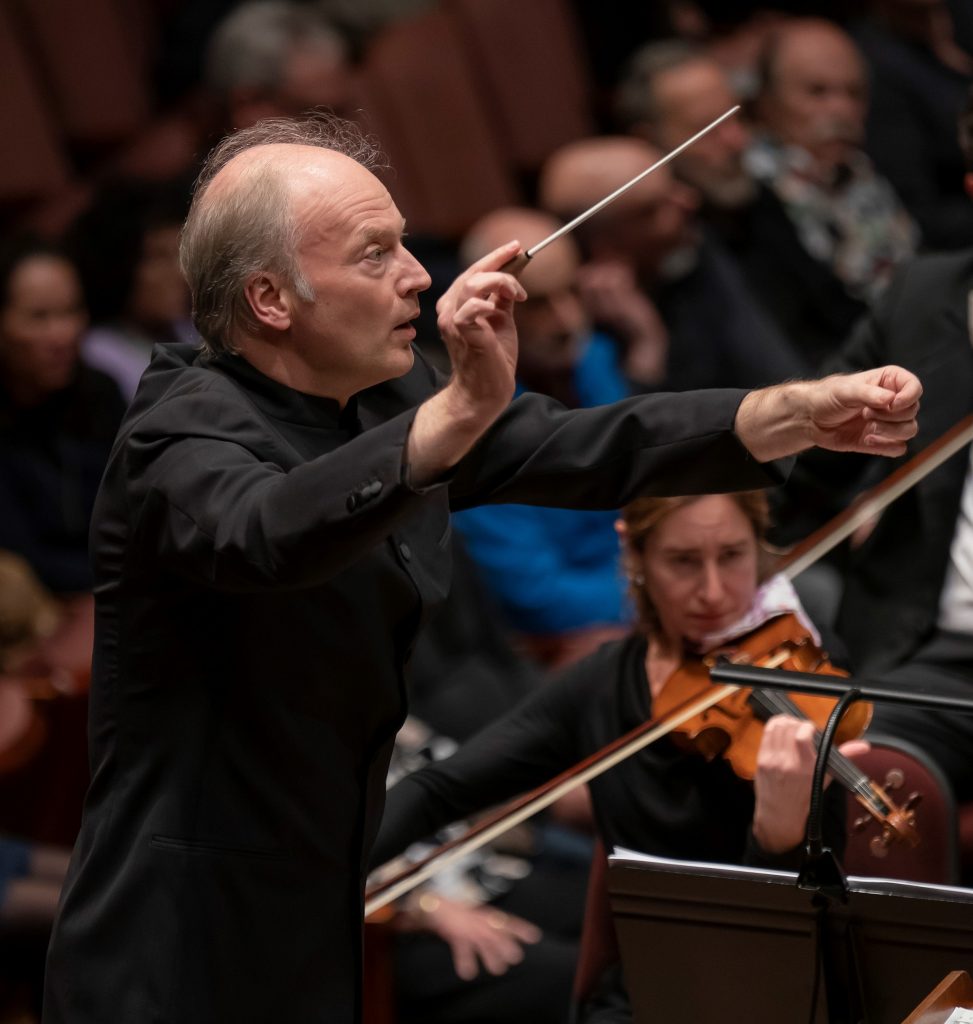Fleming a radiant O’Keeffe in “Brightness of Light” premiere

On the heels of their big Wagner outing, the National Symphony Orchestra and music director Gianandrea Noseda offered another ambitious vocal program Thursday evening at Kennedy Center: the Washington premiere of a new NSO co-commission by composer Kevin Puts, with soprano Renée Fleming in a starring role.
Puts is perhaps best known for his Pulitzer prize-winning opera, “Silent Night,” about the true-life World War I episode in which soldiers briefly laid down arms to celebrate Christmas together. His new work, “The Brightness of Light,” sets letters from the long and stormy relationship of Georgia O’Keeffe and Alfred Stieglitz for soprano, baritone, and orchestra.
The letters are wonderful material, preserving two distinctive and fascinating voices: urbane photographer Stieglitz, all grandiose, melancholy poetry; and desert painter O’Keeffe, relating her life and surroundings with plainspoken charm.
Puts capitalizes on these contrasts, setting the letters in a score of great dynamic reach and color. “Cinematic” immediately comes to mind — a descriptor that is sometimes deployed as faint praise or worse for “serious” music. But there is a seductive excess and depth of feeling in this score that defies dismissiveness. Puts gives us a riot of effects and moods that lend technicolor vividness to the wide-ranging settings in the text: sparkling violins for the desert around Taos, a plaintive piano accompaniment for Stieglitz’s mopey letters from New York (imagine a jazz-age Leonard Cohen), and antsy percussion effects for the feverish communications and travel of their early courtship.
While the musical language situates Puts in the company of other “neo-romantic” composers like Tobias Picker and Jake Heggie, he pushes this language to its expressive limits, creating long, rapturous passages that spare little in the pursuit of big emotional statements for the principals. Overall the vocal writing is engaging and natural, if in certain sections all the emotional outpouring (particularly for the Stieglitz character and in some of the duet material) threatens to become a bit one-note.
At times, Puts overplays his hand. There is the occasional turn of musical phrase that crosses the line from yearning to maudlin, where the score tries too hard to tell us what a profound, tragic relationship we are watching, rather than showing us through authentic connection between the characters’ words and the music. Less successful, also, are some of the interludes for the orchestra alone. Where the orchestral passages continue and expand on the musical ideas in the vocal portions, they make sense. But in the long, meandering preparation for O’Keeffe’s final statement, the quality of the orchestration seemed to flag.
Fleming’s voice inspired the music for the O’Keeffe role, and she contributed much to the evening’s success. Now several years past retiring many of her signature stage roles, Thursday night found her generous soprano in fine, familiar form. Fleming brought a warm, sunny optimism to O’Keeffe’s simple odes to the Southwest landscape, and her performance of the penultimate “Friends” letter — reminiscent of Barber’s Knoxville: Summer of 1915 — was a highlight.
If there is now a hint more effort in getting to those silvery top notes, lavishly showcased in this score, the result was still stunning, especially in the valedictory “Sunset” song. Yes, some of Fleming’s less appealing vocal tics were in evidence as well — that fallback hooty, sobbing sound, the occasional yelped high note and flattened vowel — but these seem like quibbles at this stage relative to the enjoyment of hearing her in projects like this.
Stieglitz, as written by Puts and ably realized by baritone Rod Gilfry, emerged as a dashing and tragic figure. Gilfry met the often highly taxing demands of this role with exciting signing, his rugged sound lending convincing heft and perspective to Stieglitz’s pining after the younger artist.
“The Brightness of Light” was bookended by two works of Richard Strauss that echoed some of the sweetness and bravura orchestral coloring in Puts’ work: first an amuse-bouche of one of the concert interludes from Intermezzo; and, after the half, “Also Sprach Zarathrustra, a tone poem from decades earlier in the composer’s output.

These works showcased some of the orchestra’s recent advances under Noseda — especially a new level of confidence from the strings, which delivered a lush unified sound in the Intermezzo excerpt.
Noseda brought plenty of sturm und drang to this reading of Also Sprach Zarathustra, maintaining relentless tempi through large swaths of the work. This was no-holds barred, breathless music-making that teetered on the brink of exhausting, but Noseda managed to cleanly draw out moments of nuance and depth to prevent monotony, thanks in particular to precise articulation and vital playing from the strings throughout. Those speeds did result in some muddy transitions in the thorniest middle sections, but paid off in a boisterous, jaw-dropping finale.
Also Sprach Zarathrustra was further evidence of some of the great colors the NSO can produce these days, as well as placing a spotlight on high quality solo work, particularly from concertmaster Nurit Bar-Josef and the crack woodwind section. The brass, for their part, fared well enough after an unfortunately anemic initial attack on that famous theme, but didn’t seem to rise to the level or urgency set by the strings.
The program repeats 8 p.m. Friday and Saturday at Kennedy Center Concert Hall. kennedy-center.org; 202-467-4600
